| Brand | Minhoon Yoo |
| Base Caliber |
ETA/Peseux 7001 |
| Movement Type | Mechanical, manual-wind |
| Lignes | 10.5”’ |
| Diameter |
23.3mm |
| Height |
2.5mm |
| Jewels |
17 |
| Beat Rate |
21,600 vph, 3Hz |
| Lift Angle |
50 degrees |
| Power Reserve |
~42 hours |
| Anti-Shock Device |
Incabloc |
| Hand Count | 3 |
| Functions | Central hours; central minutes; small running seconds subdial at 6:00 |
| Hacking Seconds? |
No |
| Finishing |
Custom nickel silver bridges, high polish chamferred edges and bevels, black polish screws, snailing on ratchet wheel |
| Country of Manufacture | Base movement is Swiss made, finished in South Korea |
| Known Models |
The Carved Piece |
Minhoon Yoo’s “The Carved Piece” is powered by a mechanical watch movement based on the ETA caliber 7001 framework.
Some of the topics covered in this caliber listing:
About Minhoon Yoo:
Minhoon Yoo is an independent watchmaking studio based in Seoul, S. Korea. Established in 2020, the brand’s namesake founder is an artist formally educated in metal and art design. Rather than follow in the footsteps of his peers and find a job in a furniture factory, Minhoon embarked on his own journey into the world of watchmaking, learning the fundamentals from a textbook by George Daniels.
The Carved Piece Caliber:
For his debut piece, Minhoon Yoo used an ETA caliber 7001 (formerly known as Peseux 7001, before Peseux was acquired by ETA in 1985). The 7001 is an ultra slim handwound movement with 17 jewels. It was first introduced in 1971 and has been used by some of the most respected watch brands since then, including Blancpain, Omega and NOMOS.
The 7001 is a solid movement, easy to work on with a longstanding history of dependability, but as with many ebauches, the factory finish leaves much to be desired. Luckily for the Carved Piece, this happens to be where Minhoon Yoo’s talent and vision shines – and continues to evolve.
Origin: Swiss Made?
The base ETA caliber is Swiss Made. However, to the extent that the movement in the Carved Piece is finished and modified, perhaps it is more accurate to consider it as being a S. Korea movement made from Swiss Parts. Minhoon Yoo starts with a fully assembled movement, then disassembles it, makes new parts from scratch and begins transforming it to the specifications of the Carved Piece.
Modifications:
While the Carved Piece’s claim to fame is its handcrafted dial constructed from 27 parts (see it on the brand’s official site here), the back of the watch also boasts Minhoon Yoo’s unique touch – literally, since most of the movement parts are custom decorated by his own hands.
One of the major modifications is the incorporation of special ratchet wheel clickspring mechanism with an entirely original design – as well as an entirely original sound that Minhoon says increases the volume of the clicking (when winding) almost to that of a pocket watch.
The final design above is the result of many trials and iterations.
“When I started this project, I had some friends who ordered the watch, and they suggested that it would be nice if there was a strong sensation when winding the crown. So I designed and made the clickspring to fit the bridge, and during the design process, the bridge broke apart, and it became a clickspring. Through trial and error, I designed and created it to its current form. During the design process, I sketched the idea, and thought it would be interesting if a part of the bridge was carved. And after many attempts, it took its current form.” -Minhoon Yoo, IMBOLDN Korea interview
The ratchet wheel and crown wheel are modified with a high polish finish on the teeth with intense snailing in the center, all done by hand. The screws are black polished, and most parts are finished on both sides.
Further modification includes the “carved” out bridges featuring a peak and valley landscape around the jewels, with an almost floral or paisley-like flow – it is a cheerful design. These bridges are not the stock ETA parts, they are made from scratch out of nickel silver (aka German Silver). Nickel silver is silver in tone but not actually containing silver metal. It is an alloy that is made by adding nickel to copper/brass. It oxidizes into a creamy color which is why Minhoon chose this particular alloy for the Carved Piece.
The frosted surfaces of the bridges are then finished with a dramatic high-polish chamfered edge. This combination offers contrast and guides the eyes through a beautiful custom landscape that a stock calibre 7001 lacks. The stock bridge measures less than 1mm in thickness, so Minhoon Yoo made the bridges thicker in order to achieve the depth of the polished edges.
Caliber Number:
With the intention and craft that Minhoon Yoo puts into each piece, Caliber Corner believes this movement is deserving of its own caliber number. In fact, I urged him to come up with one before publishing this post, but he was reluctant and did not want to confuse the community. While that is a humble position to take, it doesn’t change the fact that the movement in the Carved Piece is deserving of its own designation. On the contrary, not distinguishing the handcrafted uniqueness of this movement is more confusing. Although it is indeed based on an ETA/Peseux caliber 7001 framework (as many indie watches are), it is no longer an ETA/Peseaux 7001 in its finished state.
It should be noted that while many watch enthusiasts are aware of the trickery that some brands go through to mask their use of stock movements with brand specific caliber numbers, any major modification (more than putting a logo sticker on the rotor), qualifies the movement for a unique caliber number. Especially custom components, finishing and design work which are unique to the brand. Again, how I come to this conclusion is that the movement in the Carved Piece is no longer an ETA 7001 – if you were to replace the Carved Piece movement with a stock 7001, it would no longer be a Carved Piece. Perhaps I will write about this topic in the future, but for now I will also express that establishing a unique caliber number for a movement like this is important for brand history and evolution. For those concerned that issuing a new caliber number is potentially misleading, that may be the case for some brands which make no modifications beyond putting a logo on the rotor and not disclosing the base caliber (and also for Forrest Gump movements).
When communicated correctly, using a unique caliber number can convey more about the piece. Some of us are still bitter about being duped by watch brands from the era of the In-House Rush (when all of the big brands were racing against the clock to ramp up production of non-ETA dependent movements), but it’s time for the watch community to realize that a unique caliber designation no longer implies “in-house”, but rather uniqueness and something that sets it apart from dropping in a stock movement.
For conversation sake, the proper way to label the engine of the Carved Piece would be along the lines of: Minhoon Yoo caliber M.01 based on ETA/Peseaux 7001 or Minhoon Yoo caliber MHY1 (ETA/Peseaux 7001 base)… followed by a description of the custom work and what makes it different than a stock cal. 7001.
Replacement Price:
Of course the movement in the Carved Piece is not available for individual purchase, but acquisition of a timepiece with this custom caliber will cost $18,000 USD (that is if you are lucky enough to score one of the few pieces available worldwide – as far as I know, the plan was to make 10 of this edition, but over 80 people have already expressed a sincere interest in ordering one).
Editor’s Commentary: Reading though comments sections of other sites, I’m always grateful that the community here is so civil and thoughtful in their replies. For those in the crowd who will sneer and jeer at the price, frantically waving comparisons in hand, attempt to be mindful that the work on the Carved Piece is completed by one person. It is more comparable to a piece of art than the in-house movements of a multi-billion dollar conglomerate like Seiko, or the stock Miyota pieces assembled for Kurono, or the multi-generational establishment of Laurent Ferrier, or the outsourced Schwartz-Etienne movements in MING watches, or a Vaucher Manufacture Fleurier finished movement in a Kikuchi-Nakagawa, or movement hidden under the solid caseback of a Naoya Hida, or the Chanel venture capital dished out to F.P. Journe, or the mass production capabilities of Rolex…
This is not a diss to any the aforementioned houses, but a reminder that just because the category of “watches” is common denominator of these objects, it does not always mean the same thing for everyone – or every piece. A timepiece such as the Carved Piece simply cannot be compared to most other watches which are not designed and reworked by the hands of a singular craftsperson in an independent workshop for hours upon hours per day. Perhaps the valuation has to be dumbed down for the masses and tallied up by actual working hours/piece. It’s like comparing an A.I. generated image printed on a cheap roll of faux canvas to an original hand-painted Picasso. Maybe you like the A.I. picture more, but that preference doesn’t change what goes into making the Picasso a piece of fine art.
“I am more interested in the people who create the artwork than the artwork itself. What kind of thoughts did they have when creating this, living in that era? It’s really fun to think about things like that.” -Minhoon Yoo, IMBOLDN Korea interview
Thankfully, some tables in the watch cafeteria are beginning to wake up to independent watchmaking and how it differs in value proposition to microbrands and conglomerates. As for justification in the price, yours can come from your pocketbook. Don’t like it, don’t buy it. There is a lot more in the world to be offended by than the pricing of an indie watchmaker’s work. The individuals who purchase watches like this are typically much less interested in investing in the piece than they are investing in the person, aka patronage.
Caliber Conclusion:
In conclusion, if this is what Minhoon Yoo is able to do with a base ETA without formal training in watchmaking, just imagine what he can accomplish in the years to come – when he feels confident enough to place his own caliber number on his work. I, for one, am looking forward to it.
Videos:
In the 2 part video series below, lifestyle magazine IMBOLDN Korea took a trip to Minhoon Yoo’s watchmaking studio and had a chance to hear about the watch and the story behind it. The movement specific discussion starts around 07:13.
Update 11/9/23:
Minhoon Yoo has made some updates to the Carved Piece movement including:
- Deeper bevels on the screwheads and holes
- Nickel silver pallet cock/anchor cock
Minhoon also changed the lubrication of the click and ratchet after spotting minor wear on the prototype watch.
Here is an updated shot of the entire caseback with new engravings:
Another major update to Minhoon’s Carved Piece is on the dial side. The hand-carved hour markers now feature a blued edge to match the hands. Looking at the dial straight on from the top, the markers have a black polish finish. As soon as you move the watch and see the sides of the markers, the light catches the stunning blued finish. For more dial shots and updates, check out Minhoon’s official Instagram page @minhoon_yoo.
Additional Resources:

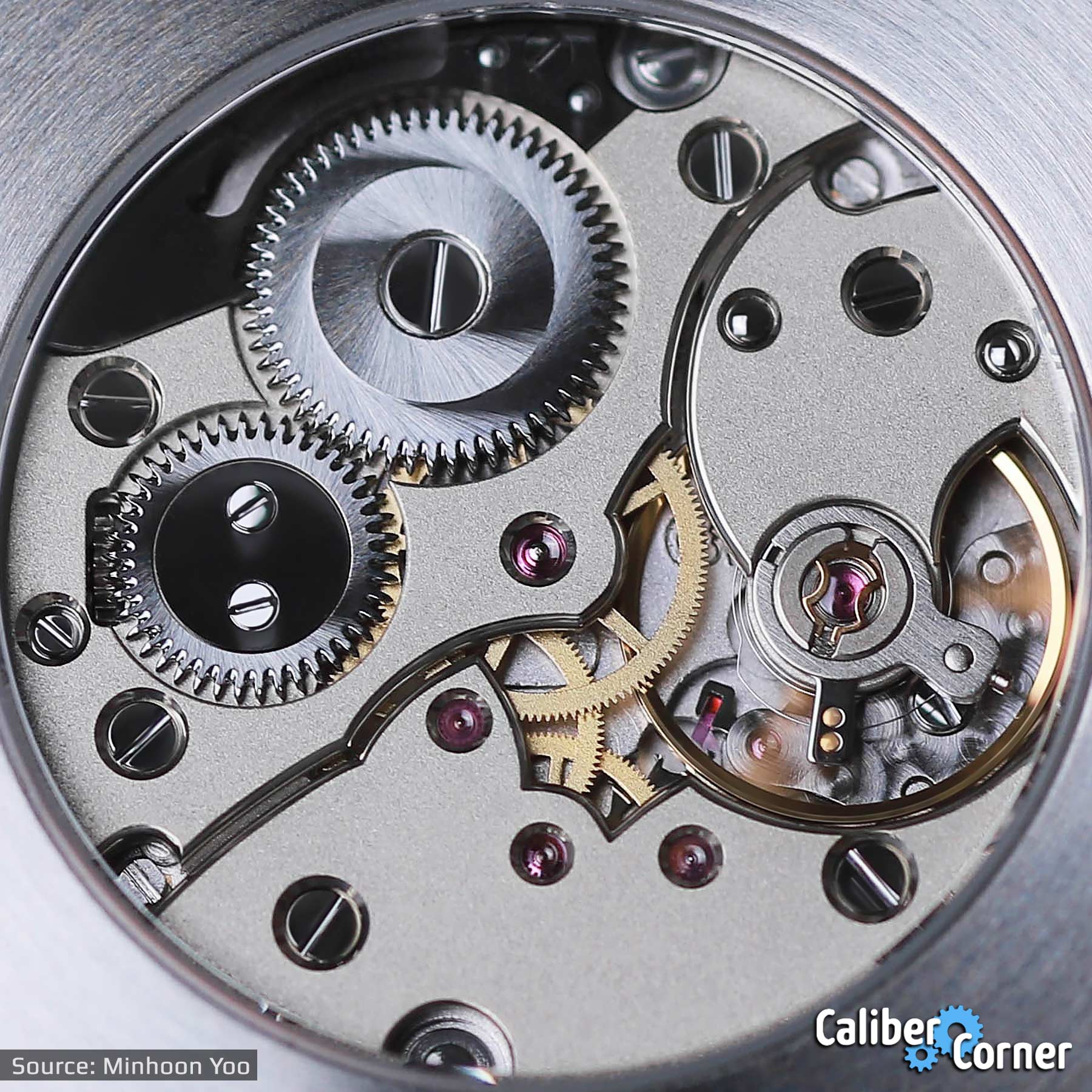


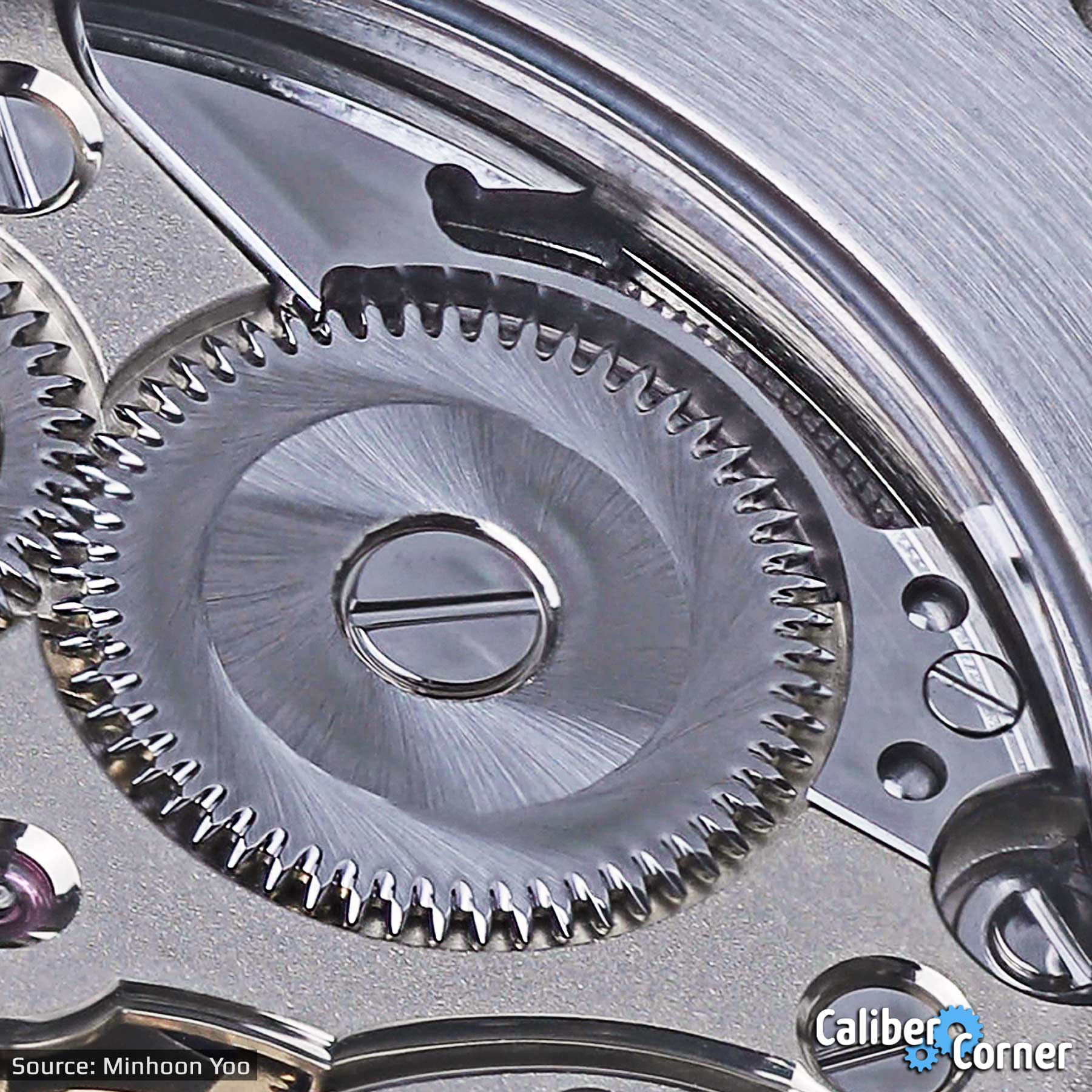

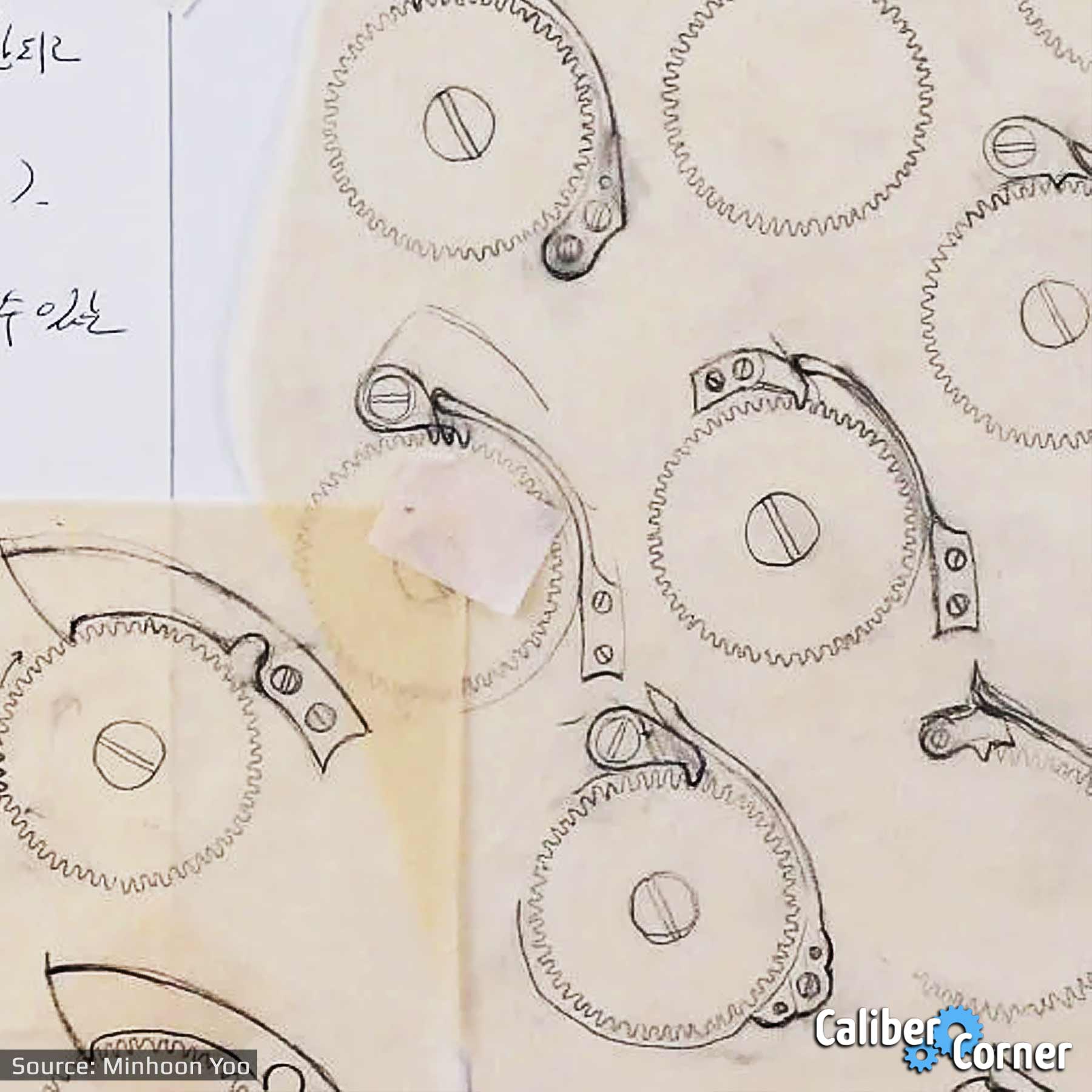
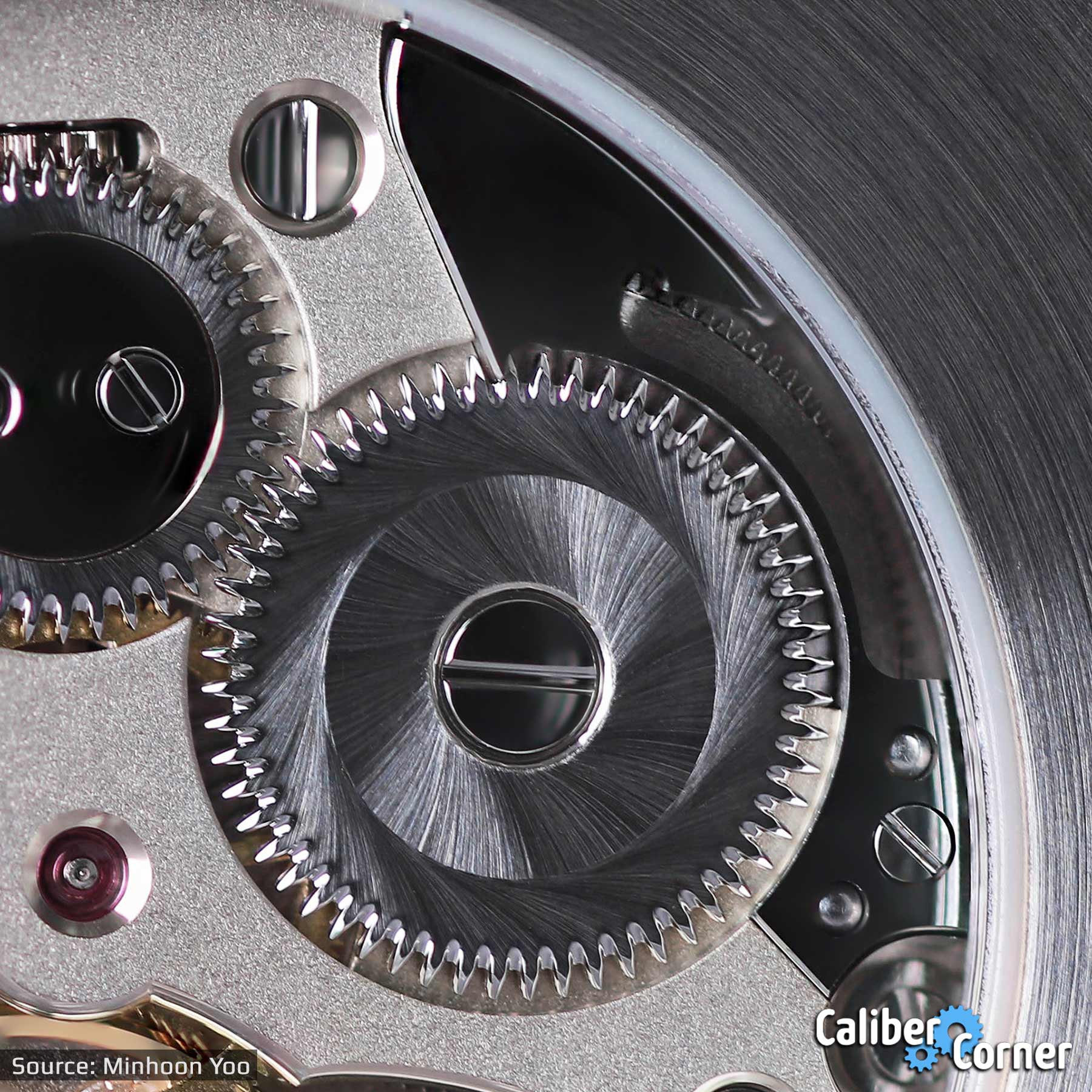
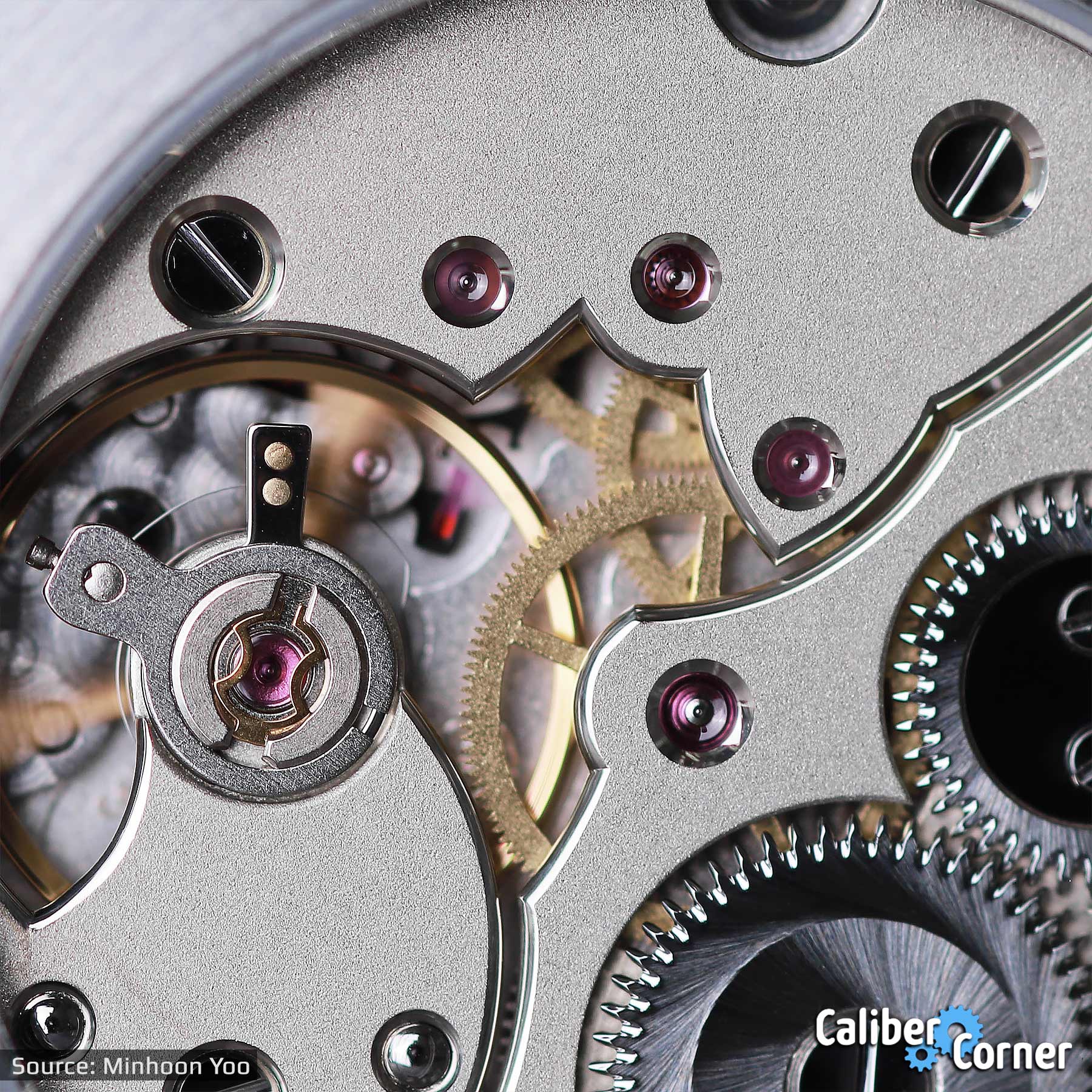
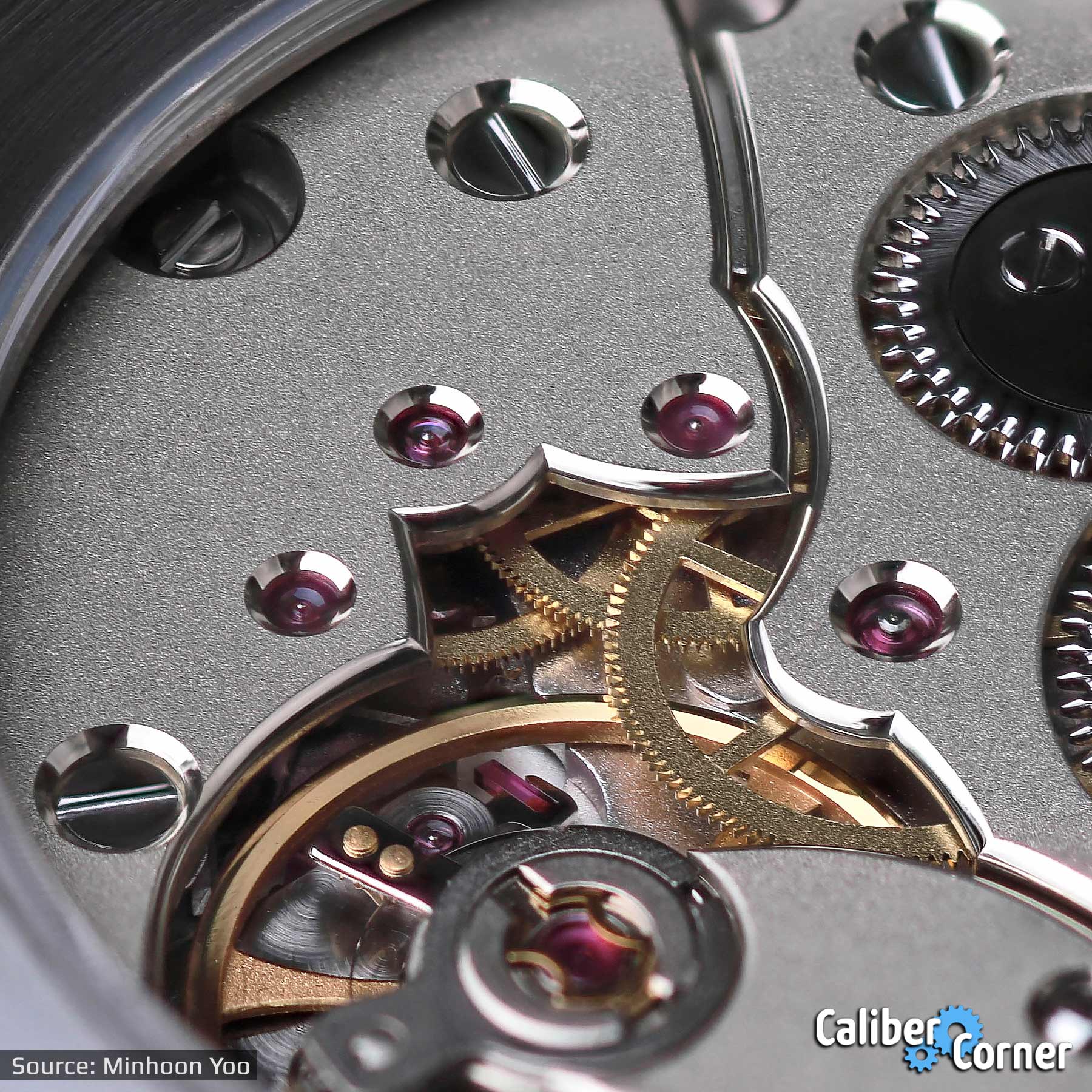
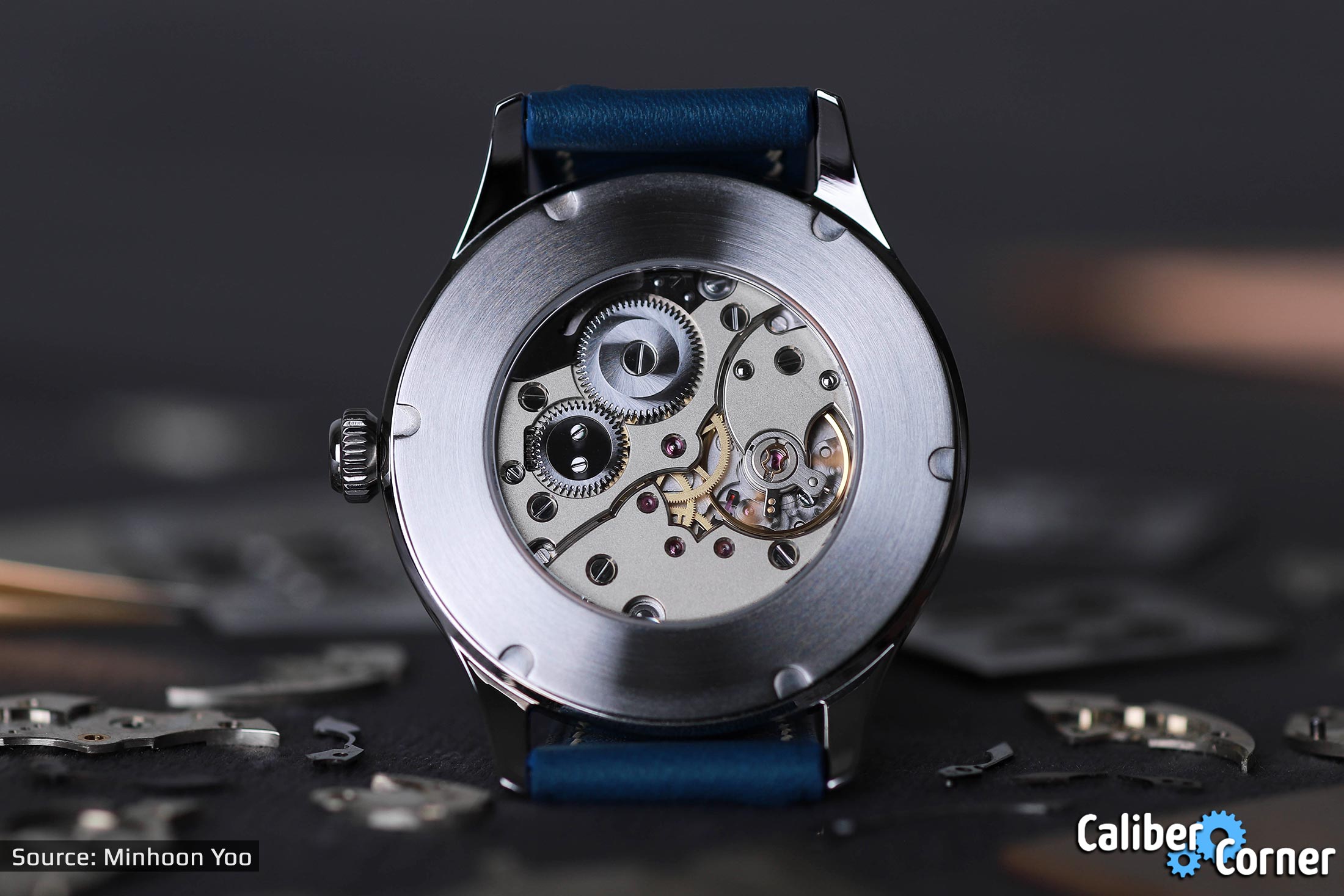
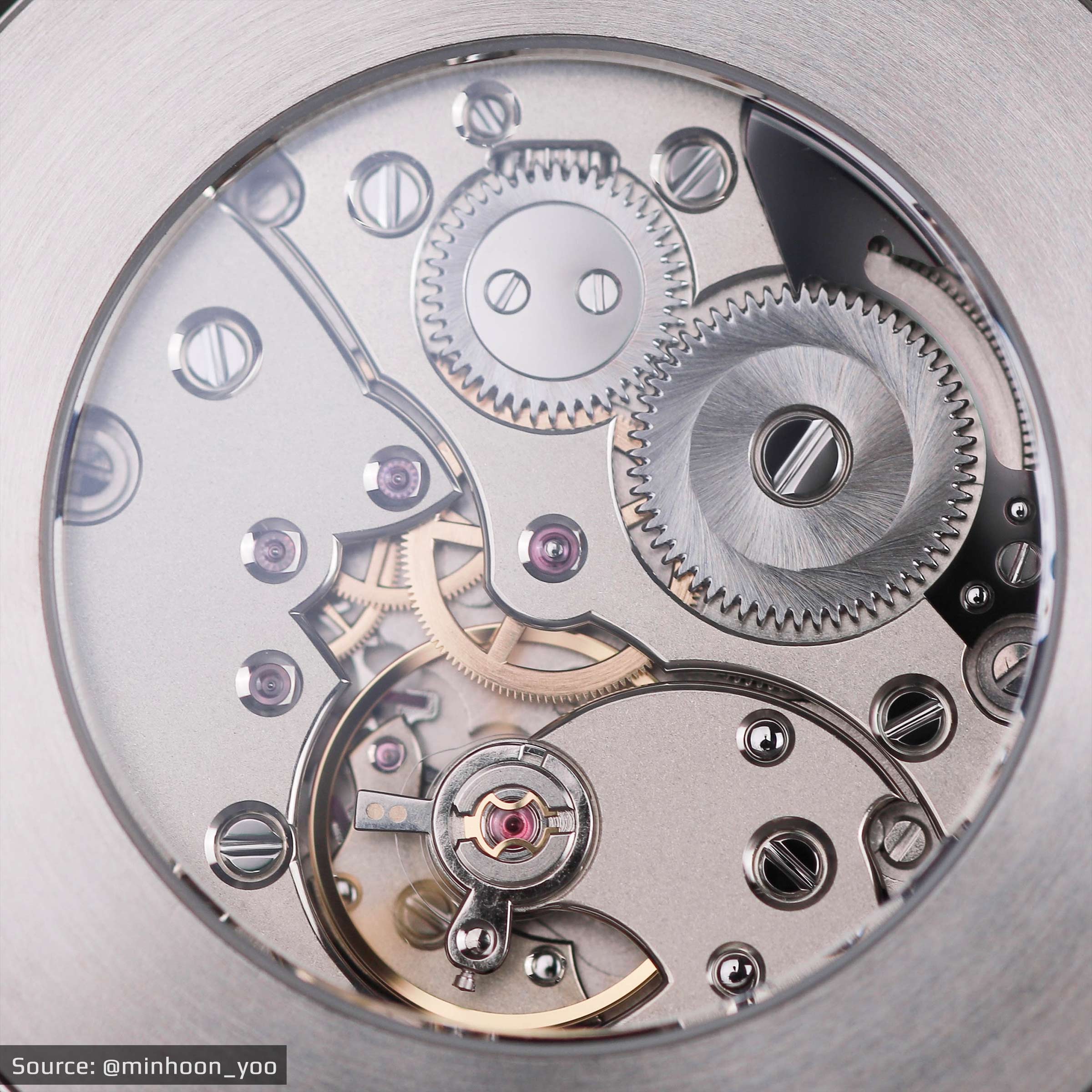

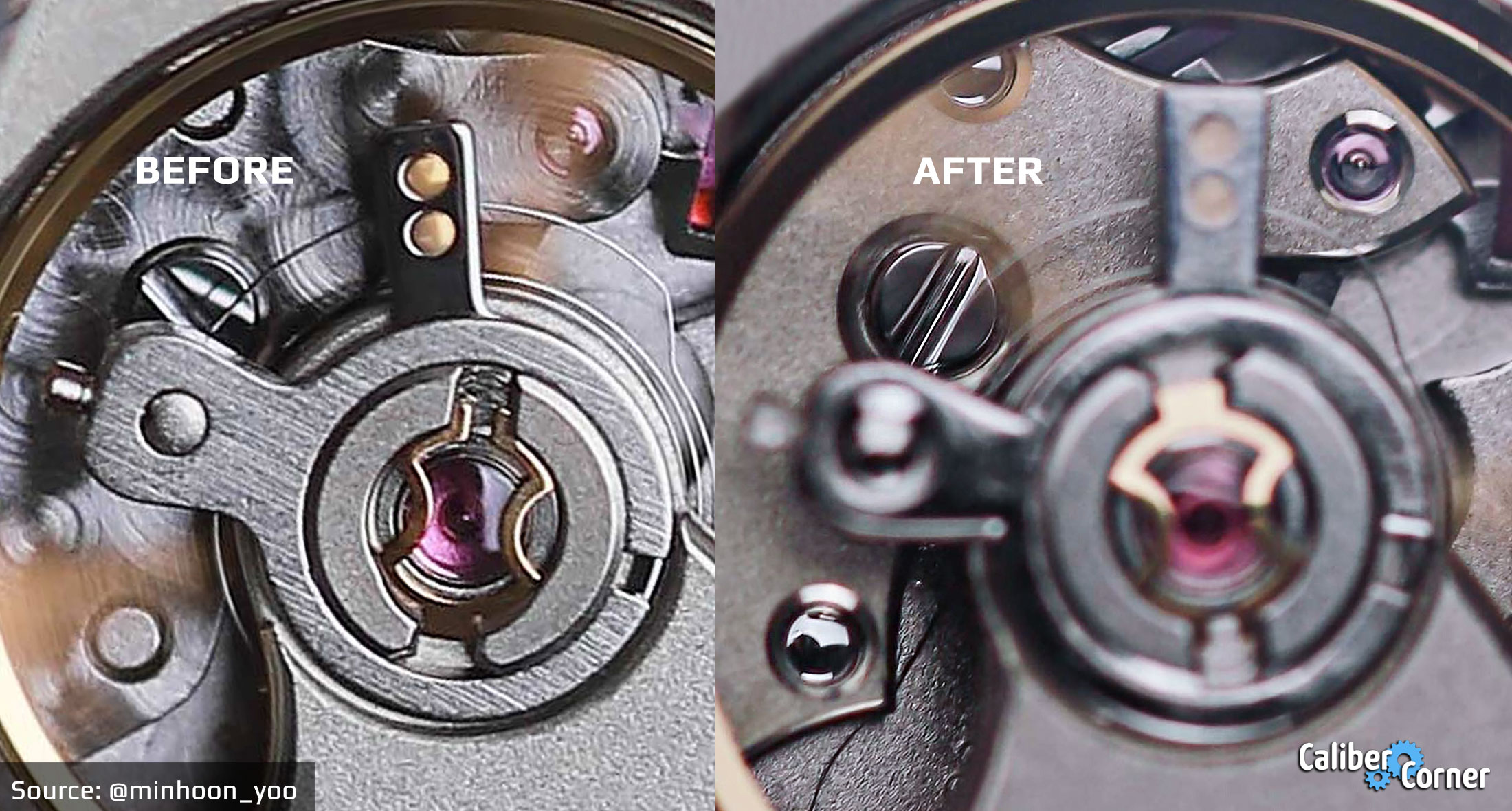

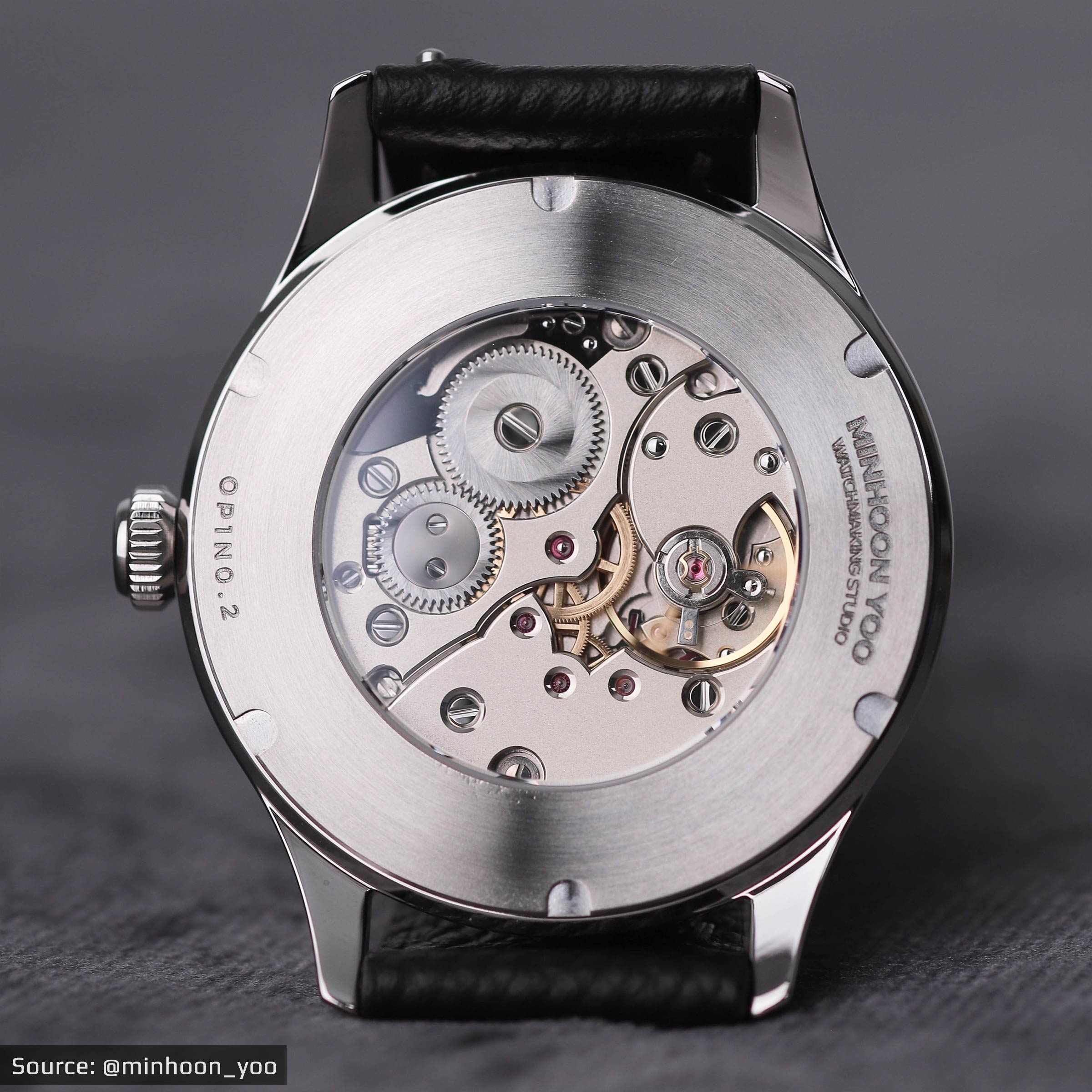



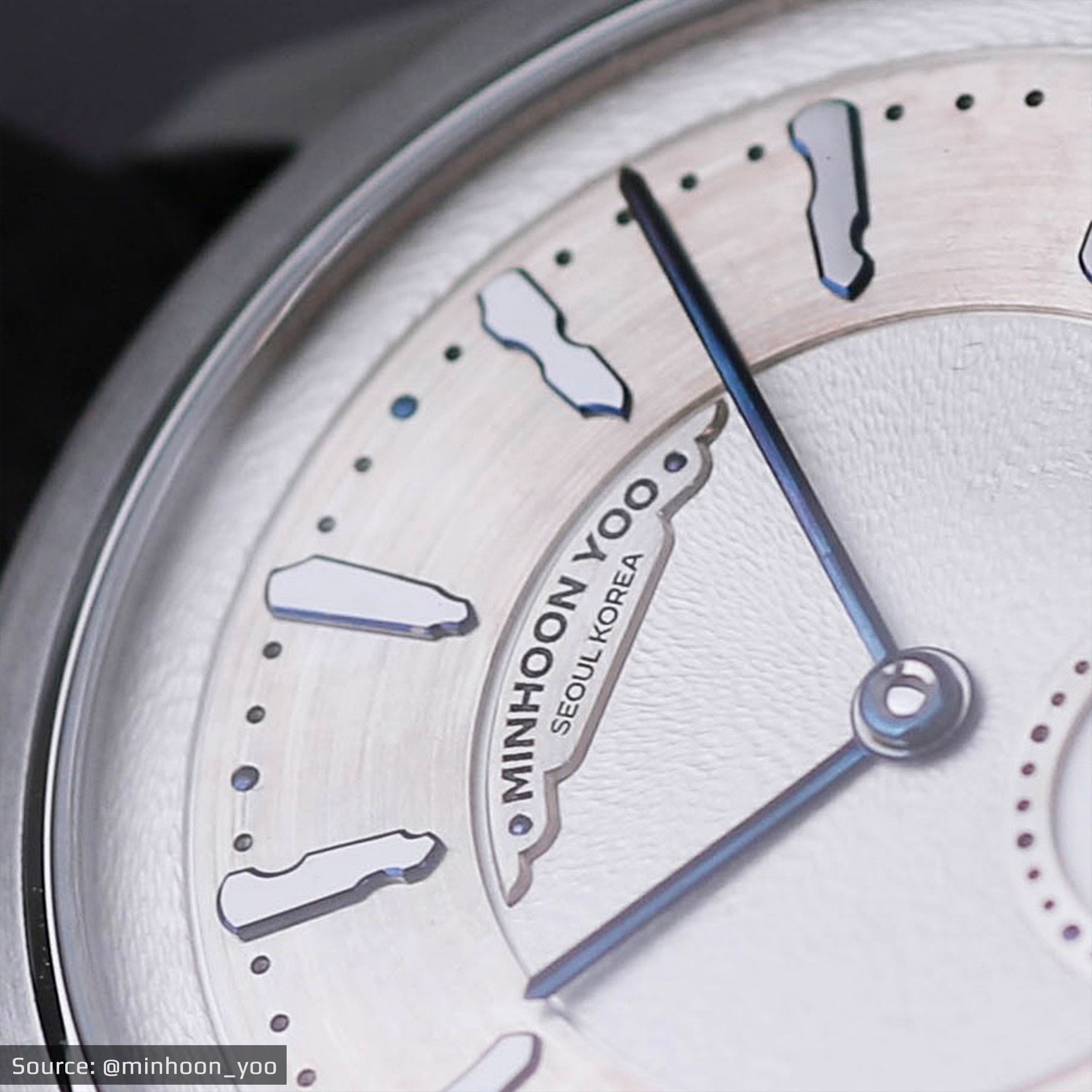
 network of watch sites
network of watch sites




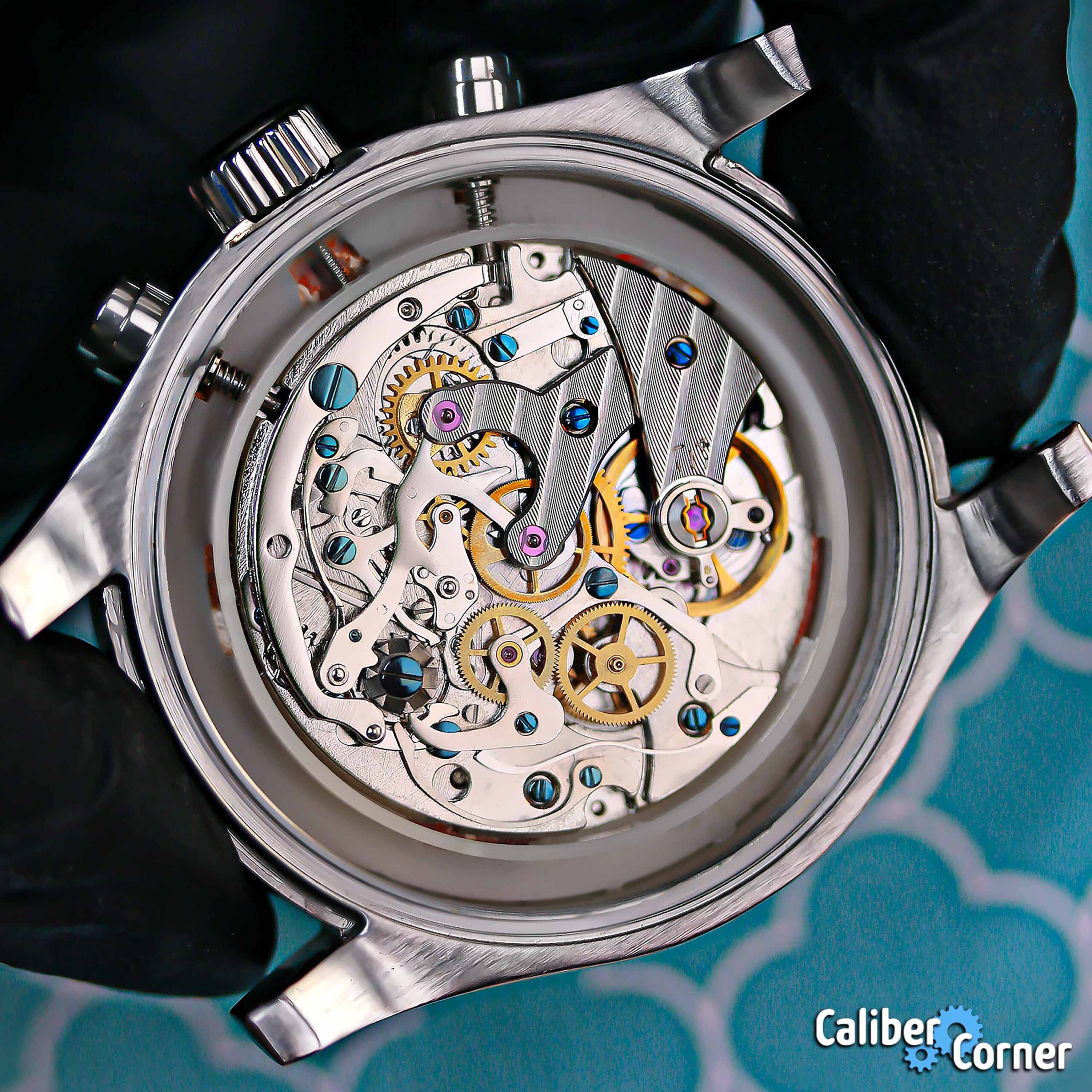

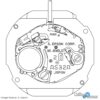






Recent Comments
Change oil every 30000 km or 18000 miles ,320000 no problem , not the best…
Get a winder if you don`t wear often
Well have one too not so cheap for a quartz ,but true that it is…
Lift Angel is 51^ based on YEMA Kickstarter infos: Caliber Manufacture Morteau 20 (CMM.20): Designed…
I've never had a single tooth broken off of the 415 gear at all. Howver,…
I own both…the Precisionist movement is NOT a cheap quartz movement. I only wish Bulova/Citizen…
Webster Watch Co. Inc. EB 8810 Stainless Steel Diving Watch One (ruby) Jewel, Acrylic Crystal,…